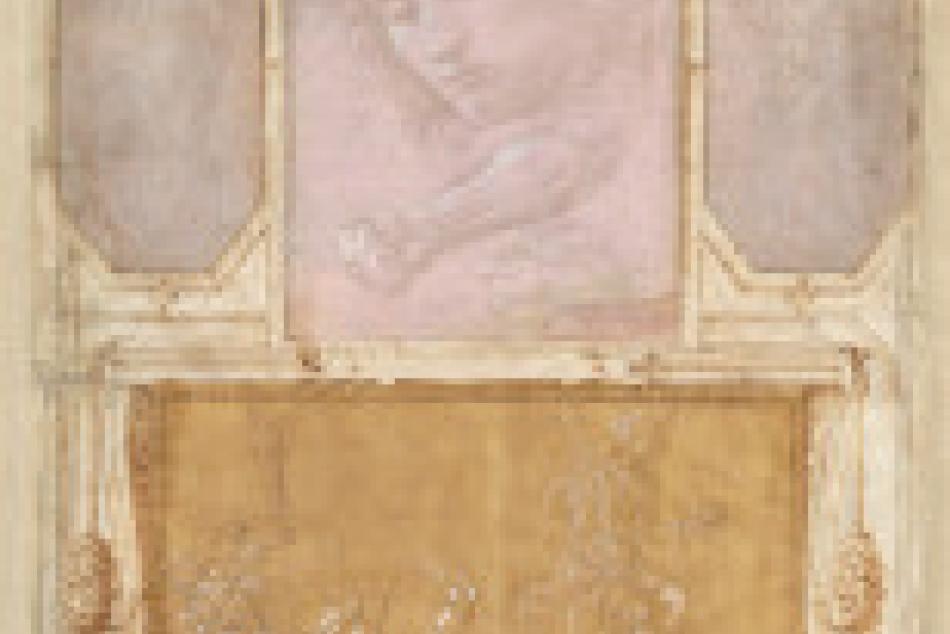Lesson: Drawing Everyday Objects
During this activity, students explore different types of mark-making using pencils. Mark-making describes the various line qualities in a drawing and can be used to explain the texture or pattern in an artwork. Artists use different qualities of lines to create texture and pattern in drawings. They also utilize a variety of other drawing materials, such as colored pencils, pens, or markers.
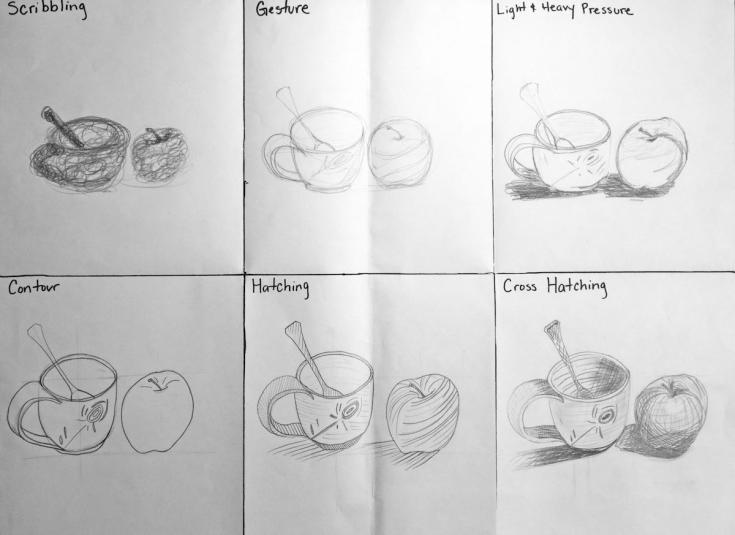
Language
Learning Objectives
- Be able to give examples and define techniques.
- Improve their art vocabulary by using key terms during discussions.
- Create a composition using different kinds of mark-making techniques.
- Analyze their work and drawings made by other students through group and individual discussions.
Materials
- Paper
- Erasers
- Sharpener
- Large drawing paper (18 x 24 inches)
- Pencils (HB, 2B, 4B, or 6B if available)
- Objects to draw (everyday items from the classroom or brought from home)
- Pens (optional)
- Colored pencils (optional)
- Markers (optional)
Explore Drawing Techniques
Set up a still life (with two or more objects) in a central location where all students can see it. Choose familiar objects found in the classroom or brought from home.
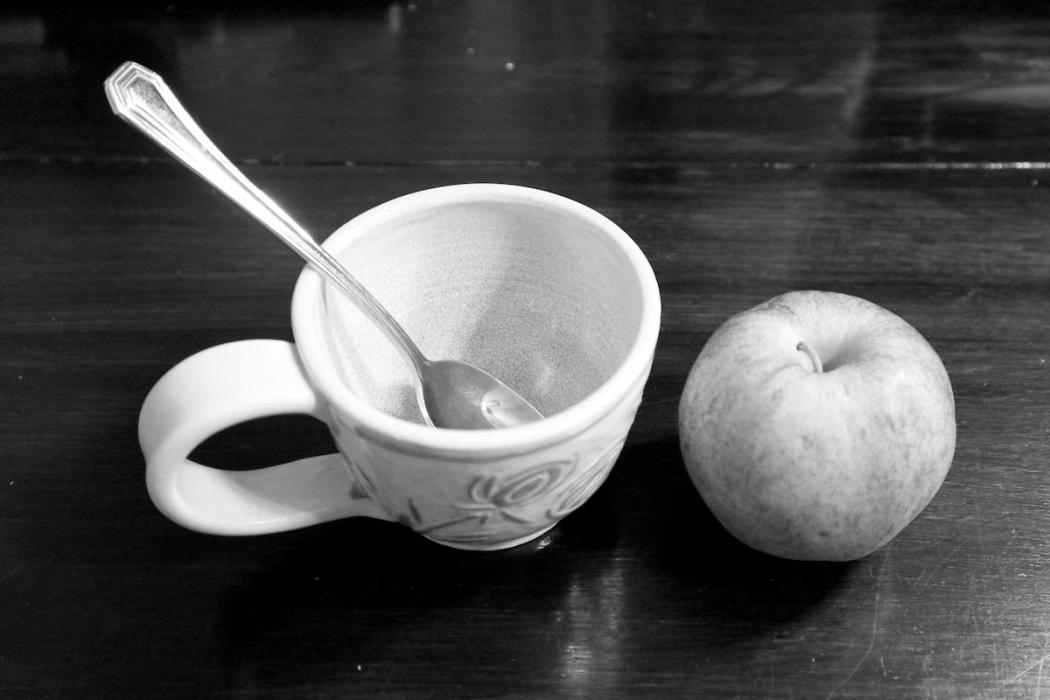
Divide a large piece of drawing paper (18 x 24 inches) into six rectangles of the same size. (You can also use six pieces of regular paper [8.5 x 11 inches].) Start at the upper left and draw the still life six times. Use one of the six techniques in each box: scribbling, gesture, light and heavy pressure, contour, hatching, and crosshatching. Notice the relationships between each technique.
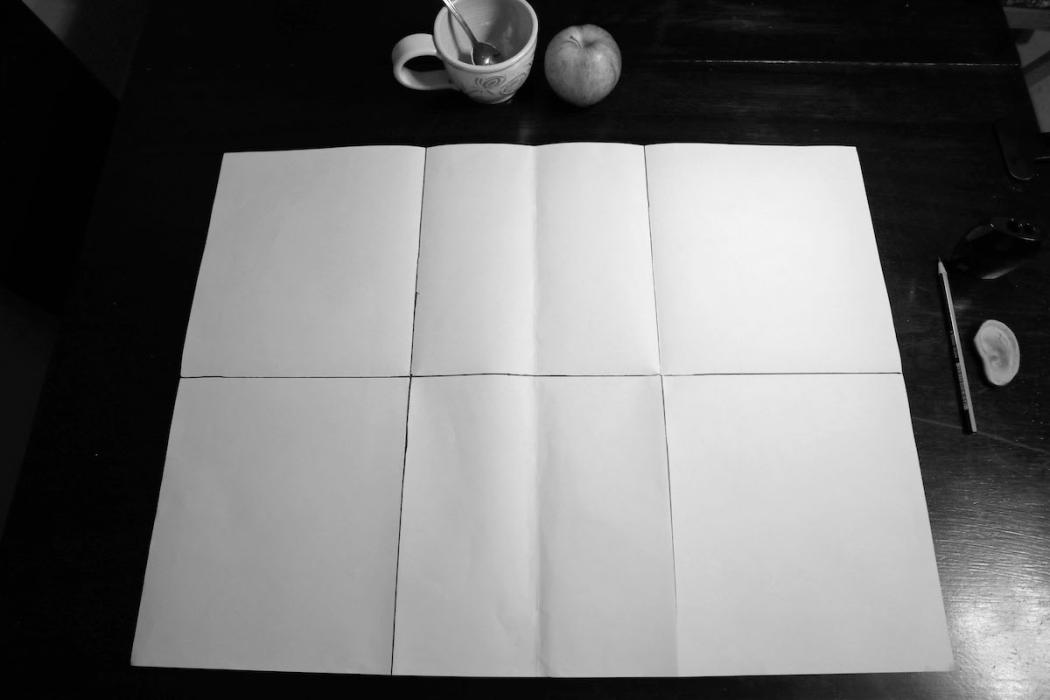
Begin with scribbling. Start in the middle of the object and make circular motions that move outward to capture the overall shape. Work quickly to complete this drawing in less than two minutes.
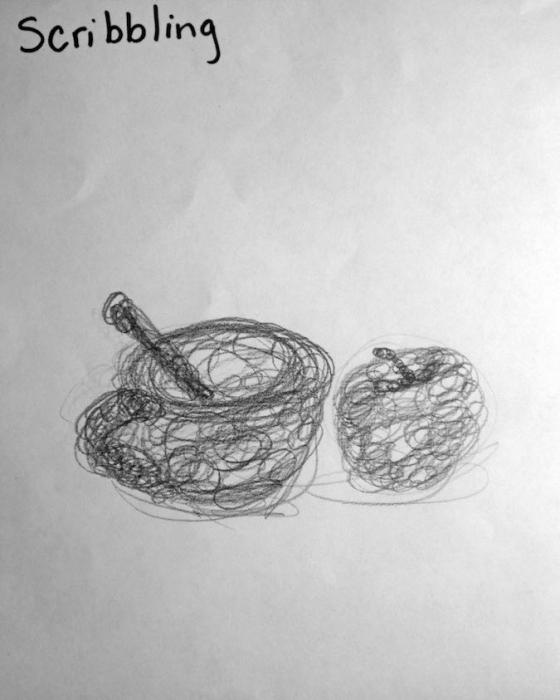
Next is gesture drawing. Again, work quickly to capture the overall shape on the object. Unlike scribbling, the motions are longer and are not always in a circular motion. Keep your pencil on the paper and sketch the objects in less than a minute.
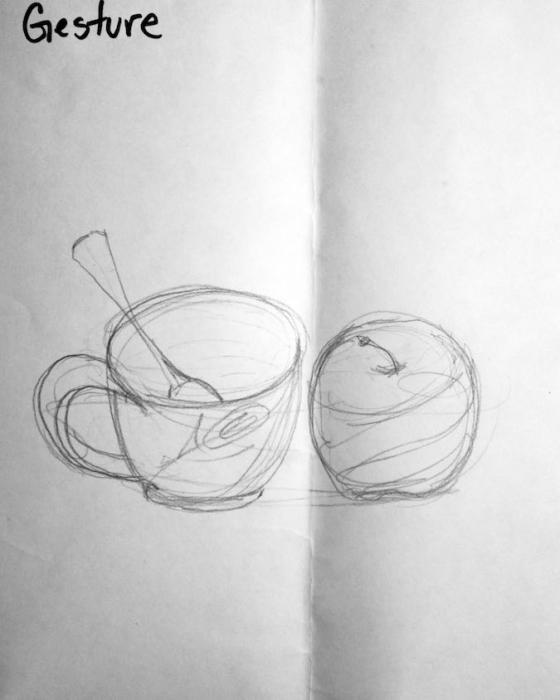
Create another gesture drawing, but this time apply light and heavy pressure to add shadows. Use light pressure in highlighted areas and heavy pressure for shadows. You can also experiment with gentle and firm pressure to create a gradient, the transition between light and dark areas. Pause here and compare the first three techniques.
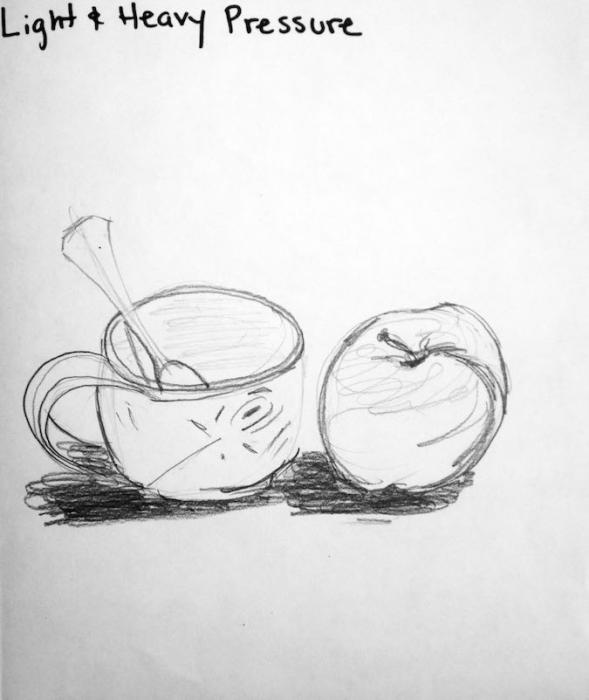
Contour drawing uses continuous long lines to convey an object's shape. The result is an outline. Try not to go over a line too many times. The repetition produces a scratchy effect instead of a continuous smooth line.
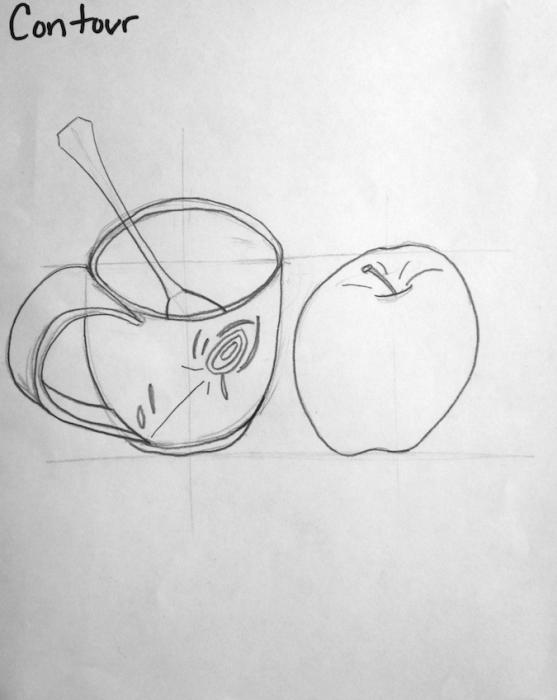
Use hatching to fill in the forms of another contour drawing. Combine light and heavy pressure with the hatching to add shadows and highlights. Remember: keep the lines separate so they don’t cross. Lines placed closely together make areas look darker.
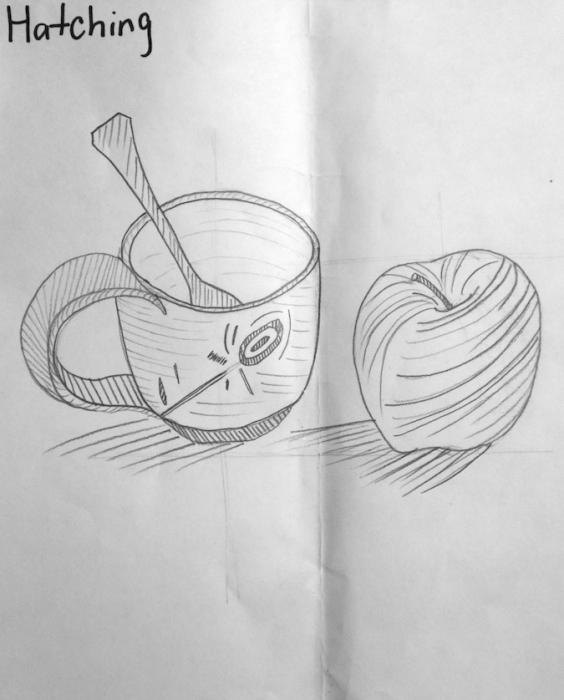
Use crosshatching to fill in objects on a third contour drawing. This technique lends a sense of direction in a drawing, for example, by making the apple appear round. Combine crosshatching with light and heavy pressure to add layers, texture, and shadows to objects in the drawing. Lightly erase areas to create highlights.
Take a look at all the techniques. What are their similarities and differences?
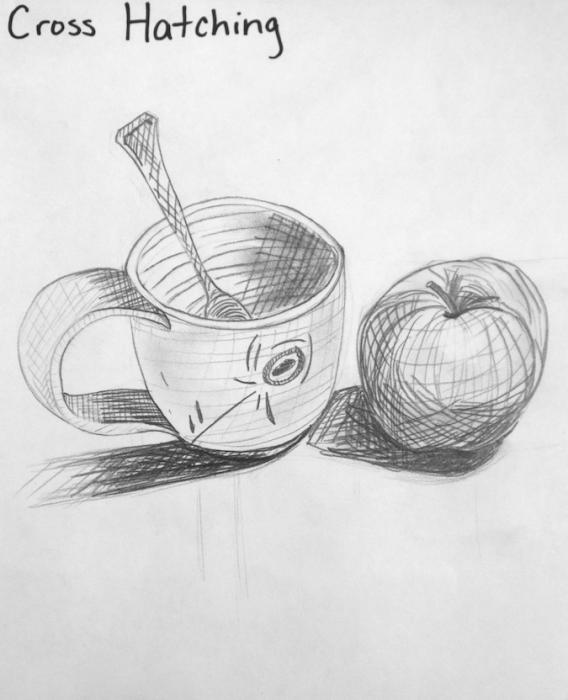
Extension
Dive deeper into the different techniques with a more extended drawing project. This longer project could be a self-portrait, larger still life, or landscape. Have students use at least two of the above techniques to complete their drawing. This is also an opportunity to add color with colored pencils, markers, pens, or crayons.
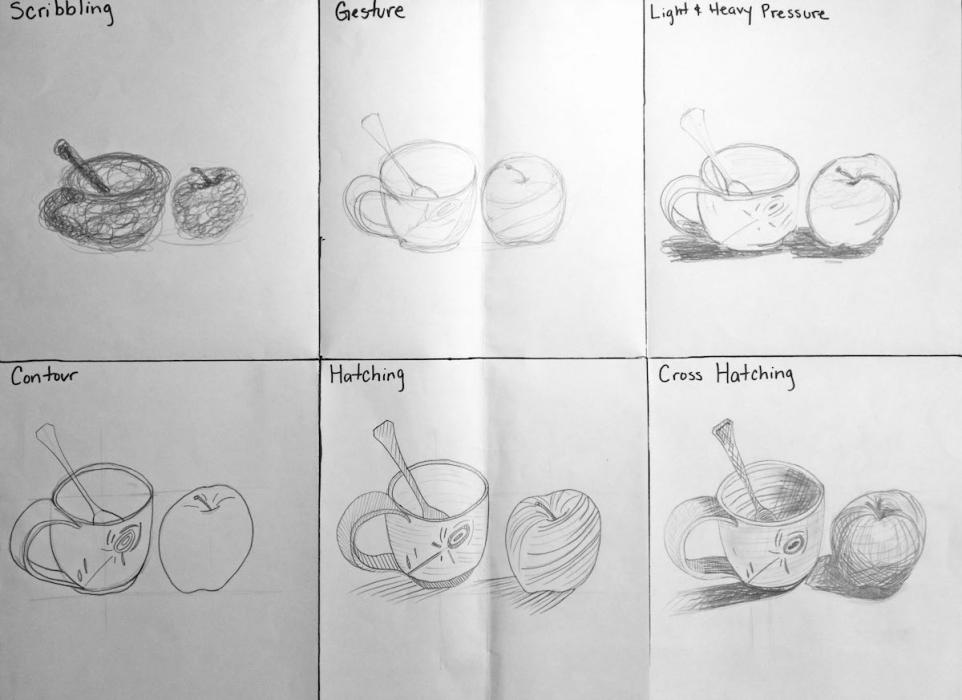
Core Arts Standards
VA:Cr2.1.7a Demonstrate persistence in developing skills with various materials, methods, and approaches in creating works of art or design.
VA:Cr2.3.7a Apply visual organizational strategies to design and produce a work of art, design, or media that clearly communicates information or ideas.
VA:Re8.1.7a Interpret art by analyzing artmaking approaches, the characteristics of form and structure, relevant contextual information, subject matter, and use of media to identify ideas and mood conveyed.





